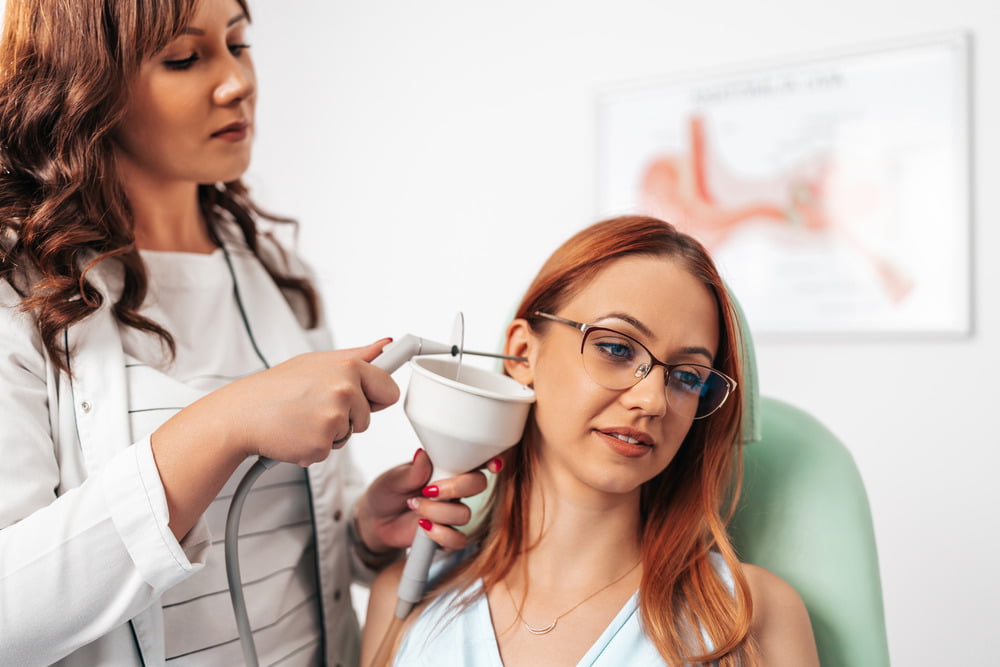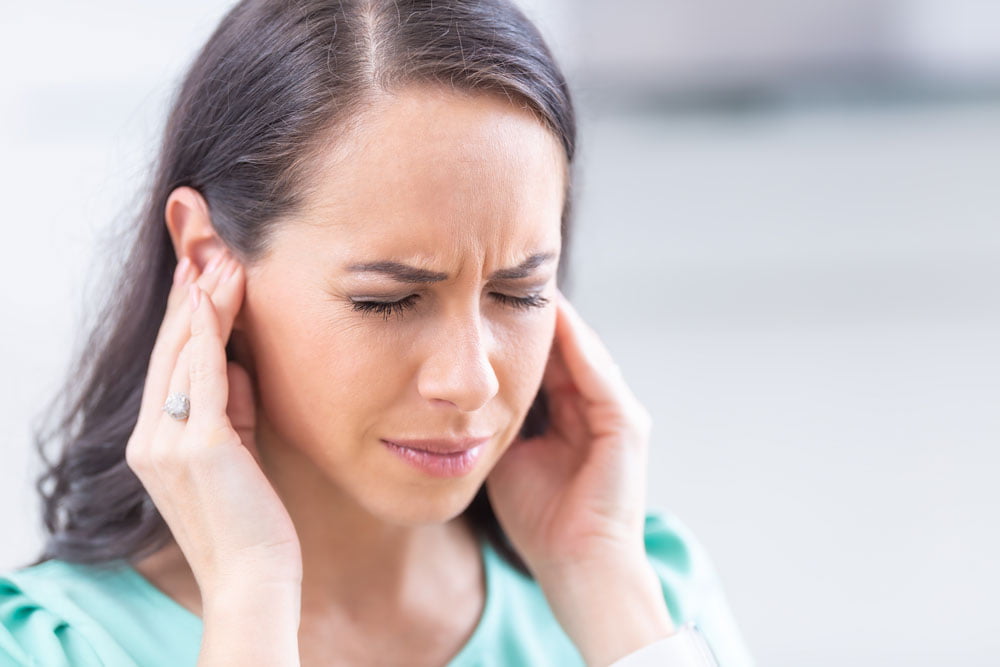Earwax, though often overlooked, plays a crucial role in maintaining ear health. This naturally occurring substance, also known as cerumen, protects the ear canal from dust, foreign particles, and microorganisms. Despite its protective benefits, the wax can sometimes cause problems when it accumulates excessively or becomes impacted in the ear. Understanding earwax – what it is, why it forms, and how to manage it – can help you maintain better ear health and prevent potential issues.
In This Article:
-
- What Is Earwax?- What Is Earwax?
-
- Types of Earwax- Types of Earwax
-
- Causes of Earwax Build-Up- Causes of Earwax Build-Up
-
- Symptoms of Earwax Build-Up- Symptoms of Earwax Build-Up
-
- Diagnosing Earwax Build-Up- Diagnosing Earwax Build-Up
-
- Treatment and Removal Methods- Treatment and Removal Methods
-
- Unsafe Earwax Removal Methods to Avoid- Unsafe Earwax Removal Methods to Avoid
-
- Prevention Tips- Prevention Tips
-
- Complications of Untreated Earwax Build-Up- Complications of Untreated Earwax Build-Up
-
- When to Seek Professional Help- When to Seek Professional Help
What Is Earwax?
Earwax, or cerumen, is a naturally occurring substance produced by glands in your ear canal. It might seem a bit gross, but it is actually an essential part of your ear’s defence system. It’s made up of a mix of shed skin cells, hair, and secretions from the glands in your ear.
So, what exactly does it do? Think of it as your ear’s personal gatekeeper. Its job is to trap dust, dirt, and other tiny particles that could potentially damage the delicate structures inside your ear. It also has antibacterial properties, helping to prevent infections by keeping harmful bacteria at bay.
But that’s not all – cerumen also acts as a natural moisturiser for your ear canal, preventing it from becoming dry and itchy. In essence, it is your ear’s way of staying clean, healthy, and protected. So, while it might not be the most glamorous aspect of your body, it certainly plays a vital role in your overall ear health.
Types of Earwax
Did you know that not all wax is the same? It comes in two main types: wet and dry. The type of wax you have is determined by your genetics, and it can actually tell you a bit about your ancestry!
Wet Earwax
Wet wax is typically sticky and golden-brown in colour. This type of wax is more common among people of African and European descent. It’s made up of a higher concentration of lipids, which gives it that moist, sticky texture.
Dry Earwax
On the other hand, dry wax is usually flaky and light-coloured. It’s more common in people of East Asian and Native American descent. This type contains less lipid, which is why it tends to be drier and crumblier.
Genetic Factors
The type of wax you have is influenced by a specific gene called the ABCC11 gene. This gene determines whether your earwax is wet or dry. It’s a fascinating example of how our genetics can influence even the smallest aspects of our bodies!
So, whether you have wet or dry wax, it’s all perfectly normal and just a part of what makes you, you. Understanding the type of wax you have can help you take better care of your ears and choose the right cleaning methods.
Causes of Earwax Build-Up
While earwax plays an important role in keeping your ears clean and healthy, sometimes it can build up and cause problems. Here are some common causes of wax build-up:
Overproduction of Earwax
Some people simply produce more earwax than others. This can lead to excess wax accumulating in the ear canal. Factors like stress, anxiety, and even certain medications can sometimes trigger your glands to produce more of it.
Earwax Blockages in the Ear Canal
Blockages can occur when wax doesn’t naturally move out of the ear as it should. This can be caused by a narrow or unusually shaped ear canal, which makes it difficult for it to exit on its own.
Use of Earplugs and Hearing Aids
Using earplugs or hearing aids can also contribute to earwax build-up. These devices can prevent the wax from naturally exiting the ear, causing it to accumulate. If you use earplugs or hearing aids regularly, it’s important to clean them frequently and check for wax build-up.
Ear Infections and Skin Conditions
Ear infections and certain ear conditions, like eczema or psoriasis, can cause your ear canals to become inflamed. This inflammation can block the natural movement of wax, leading to build-up.
Symptoms of Earwax Build-Up
Wax build-up can cause a variety of symptoms that can be quite bothersome. Here are some common signs to watch out for:
Hearing Loss or Muffled Hearing
One of the most noticeable symptoms of impaction is a sudden or gradual decrease in hearing. It might feel like your ears are plugged or that sounds are muffled, making it difficult to hear conversations or your favourite TV shows.
Earache and Discomfort
If you’re experiencing pain or discomfort in your ear, it could be due to a build-up of wax. The excess amount can press against the ear canal, leading to a persistent ache that can be quite annoying.
Itchiness in the Ear Canal
A constant itch in your ear can also be a sign of earwax build-up. While it might be tempting to scratch, try to resist the urge! Scratching can push the wax further in or even cause injury to your ear canal.
Tinnitus (Ringing in the Ears)
Tinnitus, or a ringing sound in the ears, can be another symptom of too much cerumen. This ringing can range from a low hum to a high-pitched whine and can be quite distracting.
Dizziness and Balance Issues
Can earwax cause dizziness? Believe it or not, these build-up can even affect your balance. The inner ear plays a crucial role in maintaining balance, and when wax accumulates, it can sometimes lead to these issues.
If you’re experiencing any of these symptoms, it might be time to check if earwax build-up is the culprit. Taking steps to manage and remove excess wax from your ear can help alleviate these symptoms and get your ears back to feeling normal.
Diagnosing Earwax Build-Up
Figuring out if earwax build-up is the reason behind your ear troubles is important for proper treatment. When you visit a healthcare professional, they’ll use a couple of simple methods to diagnose the wax build-up:
Otoscopy
This is the most common method. The healthcare provider will use an otoscope, a small device with a light and a magnifying lens, to look inside your ear. This allows them to see if there’s any excess wax blocking your ear canal. It’s quick and painless, and it gives a clear view of what’s going on inside your ear canal.
Hearing Tests
If your symptoms include hearing loss, the healthcare professional might also perform a hearing test. This helps determine if earwax build-up is affecting your hearing and to what extent. Additionally, hearing tests can reveal whether there’s any underlying hearing loss not related to earwax.
If you suspect that you might have impacted earwax, a quick visit to your GP or an audiologist can provide clarity and the right treatment plan.
Earwax Treatment and Removal Methods
If you’ve got a build-up of earwax, there are several ways to get your ears back to their clear and comfortable state. Here are some effective treatment and removal methods:
Home Remedies
Before heading to the audiologist/ear care provider, you might want to try some simple home remedies. These can be effective in softening the earwax and helping it dislodge naturally:
- Ear Drops and Oils: Over-the-counter ear drops or natural oils like olive oil, almond oil, or baby oil can help soften the earwax, making it easier to remove. Just put a few drops into your ear, tilt your head to let it soak in, and then let it drain out.
- Warm Water Flushing: You can also try gently flushing your ear with warm water. Use a rubber bulb syringe to squirt a small amount of water into your ear canal while tilting your head. Make sure the water is warm, not hot, to avoid dizziness. Tilt your head in the opposite direction to let the water (and hopefully the wax) drain out. Use this method with caution, as introducing water into the ear on your own as a non-healthcare professional can pose risks such as infection or damage to the eardrum. Be very gentle and ensure you’re careful throughout the process.
Professional Treatments
If home remedies don’t work or if you have a more severe build-up, it’s time to seek professional help. Healthcare professionals have several methods to safely and effectively remove earwax:
- Microsuction: This is a quick and painless procedure where a healthcare professional uses a small vacuum to gently suction out the impaction. It’s precise and safe, and you can often see what’s happening on a screen if you’re curious!
- Ear Irrigation: In this method, a professional uses a pressurised flow of water to flush out the earwax. It’s similar to the warm water flushing you might do at home but done with specialised equipment to ensure effectiveness and safety.
- Manual Removal: Sometimes, the best way to remove stubborn earwax, especially if it’s quite hard and impacted, is manually. A healthcare professional can use special tools like a curette or small forceps to carefully scoop out the wax. This method can also be used alongside ear irrigation or microsuction.

Unsafe Earwax Removal Methods to Avoid
While it might be tempting to try at-home remedies for wax removal, certain methods can pose significant risks to your hearing health. Here are some unsafe practices to avoid:
Ear Candling
Ear candling involves inserting a hollow, cone-shaped candle into the ear canal and lighting it, supposedly creating a vacuum to draw out earwax. However, this method is both ineffective and dangerous:
- Lack of Efficacy: Studies have shown that ear candling does not remove earwax. The residue found after ear candling is typically from the candle itself, not the wax in the ear.
- Burns and Injuries: The open flame can cause burns to the ear, face, and hair.
- Blockages: Wax from the candle can drip into the ear canal, causing blockages.
- Eardrum Damage: The heat and pressure can damage the eardrum, leading to pain, hearing loss, and infection.
Using Sharp Objects
Using sharp objects like hairpins, toothpicks, or tweezers to remove earwax is extremely hazardous and can lead to severe injuries:
- Eardrum Perforation: Sharp objects can puncture the eardrum, causing severe pain, hearing loss, and a risk of infection.
- Ear Canal Injuries: Sharp objects can scratch or damage the delicate skin inside the ear canal, leading to bleeding, pain, and potential infections.
Cotton Buds
While cotton buds are commonly used for cleaning of the outer ear, they are not recommended for earwax removal. The risks they pose include:
- Pushing Wax Deeper: Cotton swabs can push the wax further into the ear canal, creating a more serious blockage.
- Injuries: Similar to sharp objects, cotton swabs can cause injuries to the ear canal and eardrum.
Earwax Impaction Prevention Tips
To keep earwax build-up at bay and maintain ear health, here are some friendly tips:
Regular Ear Check-Ups
Schedule regular check-ups with a healthcare professional to monitor ear health and catch any potential issues early.
Proper Ear Hygiene Practices
Clean your outer ear with a washcloth regularly and avoid inserting objects into your ear canal.
Avoid Using Cotton Swabs
Cotton swabs and similar objects can push earwax deeper into the ear canal, leading to blockages and potential damage.
Clean Earpieces Regularly
If you use hearing aids, earbuds, or ear plugs, clean them regularly to prevent wax build-up.
By following these tips, you can help prevent excessive wax build-up and keep your ears healthy and happy.
Complications of Untreated Earwax Build-Up
Leaving earwax build-up untreated can lead to several complications that can affect your ear health and overall wellbeing. Here are some potential complications to be aware of:
Risk of Infections
When earwax accumulates and hardens, it can create a blockage in the ear canal, trapping bacteria and leading to infections. These can cause pain, swelling, and discharge, and may require medical treatment.
Permanent Hearing Damage
Ignoring earwax build-up can also lead to more permanent hearing issues. The pressure from hardened earwax can damage the delicate structures in the ear, potentially leading to conductive hearing loss. This is a type of hearing loss caused by obstructions or damage in your ear canal, middle ear, or eardrum. The damage can sometimes be irreversible, which is why regular ear care and prompt treatment are essential if you suspect a blockage.
Impact on Quality of Life
Beyond physical health, earwax impaction can significantly affect your quality of life. Blocked ears can cause discomfort, a feeling of fullness, and diminished hearing, which can affect your ability to communicate effectively. This can result in social isolation and frustration. Moreover, symptoms like tinnitus (ringing in the ears) and dizziness can disrupt daily activities and overall wellbeing.
Make sure to address wax build-up promptly and maintain good ear hygiene. This will help you avoid complications and ensure your ears stay healthy and comfortable.

When to Seek Professional Help
Even though wax build-up can sometimes be managed at home, professional intervention is often necessary. Here’s when you should consider seeing a healthcare provider:
- Persistent Symptoms Despite Home Treatment: If you’ve tried home remedies and the symptoms persist, it’s time to consult a professional. Persistent hearing loss, discomfort, or a feeling of fullness in the ear despite your efforts might indicate a more serious issue.
- Severe Pain or Discharge: Experiencing severe pain in your ear or noticing any discharge can be a sign of an infection or other underlying conditions that need medical attention. Don’t ignore these symptoms, as they can lead to more significant problems if left untreated.
- Hearing Loss That Doesn’t Improve: If your hearing doesn’t improve after trying to remove the wax, it’s essential to seek professional help. There could be other factors at play, and a healthcare provider can perform a thorough examination to diagnose and treat the issue effectively.
Taking these steps ensures you address any earwax-related problems promptly and avoid potential complications. Regular check-ups and proper ear care can help maintain your hearing health and overall wellbeing.
Hear4U’s Earwax Removal Services
Finding proper earwax removal services can be challenging, especially since the NHS no longer provides this service. However, Hear4U is here to ensure you receive the best care possible. Our professional earwax removal services are conducted by experienced audiologists who have mastered all three methods of earwax removal: microsuction, irrigation, and manual removal.
Choosing Hear4U means opting for high-quality care with numerous benefits:
- Experienced Audiologists: Our team consists of highly skilled audiologists with years of experience in earwax removal. You can trust that you’re in safe hands.
- All Three Methods: We offer earwax removal using microsuction, irrigation, and manual techniques, ensuring we can tailor the treatment to your specific needs.
- Emergency Bookings: We understand that earwax build-up can sometimes require immediate attention. That’s why we offer emergency bookings to quickly address your discomfort.
- Comprehensive Hearing Health: Beyond earwax removal, we provide free hearing tests to ensure your hearing is in optimal condition.
Ready to experience top-notch ear care? Click the button below to book your earwax removal appointment with Hear4U today!






